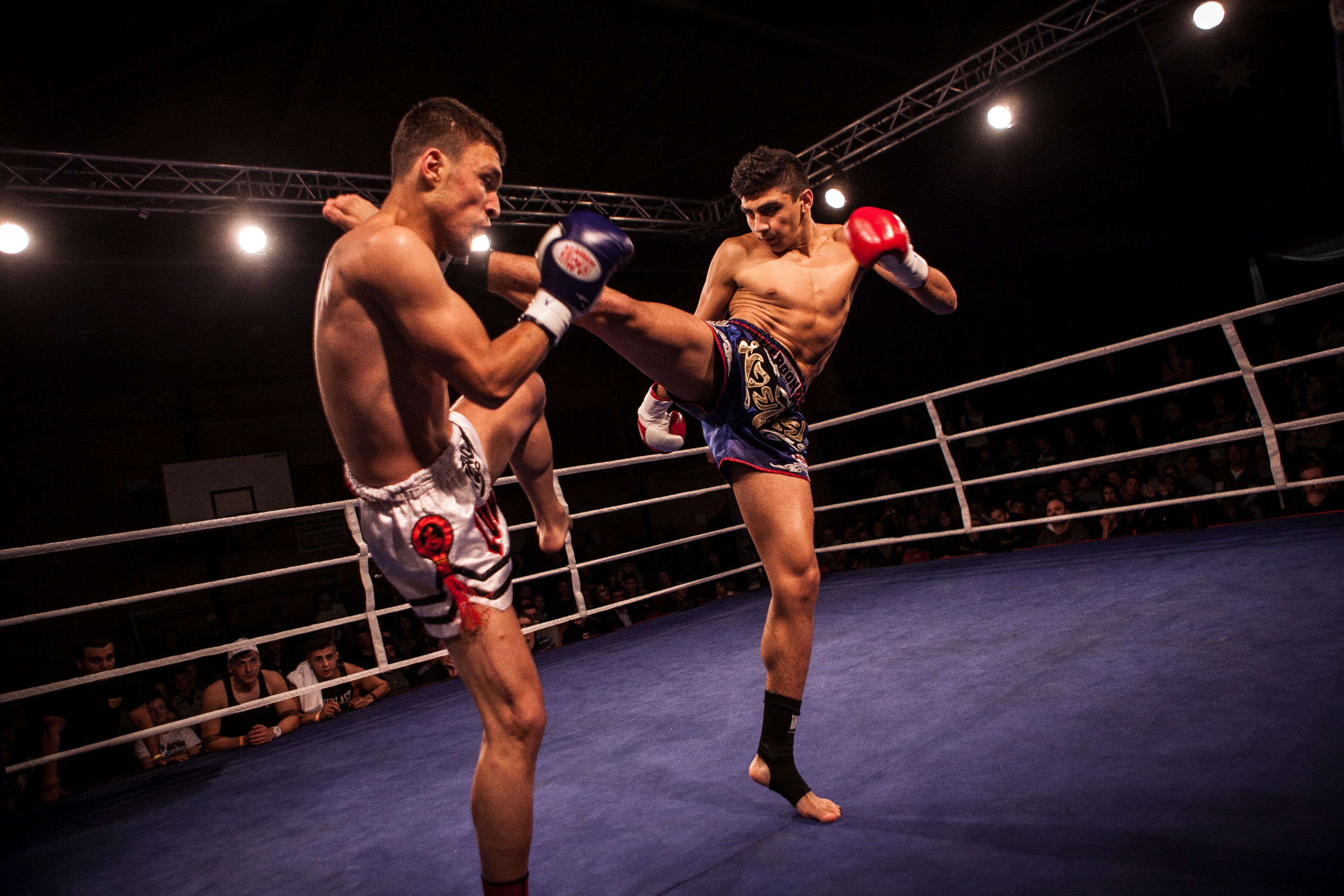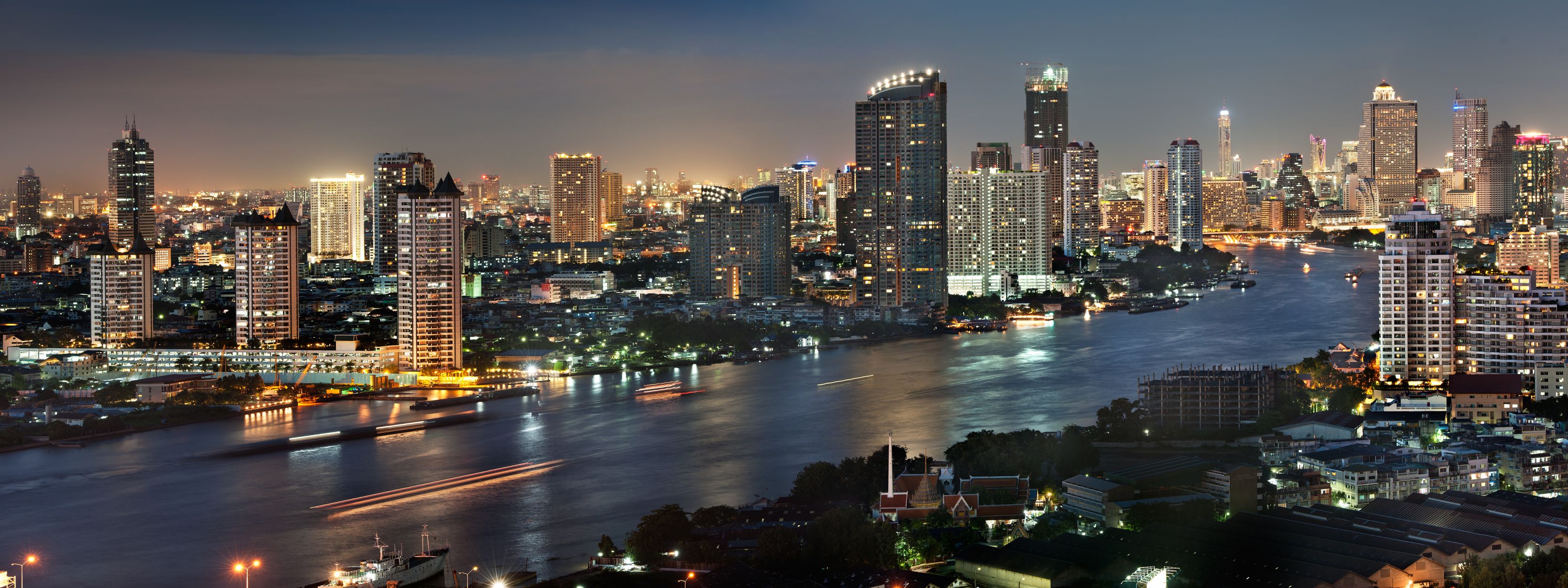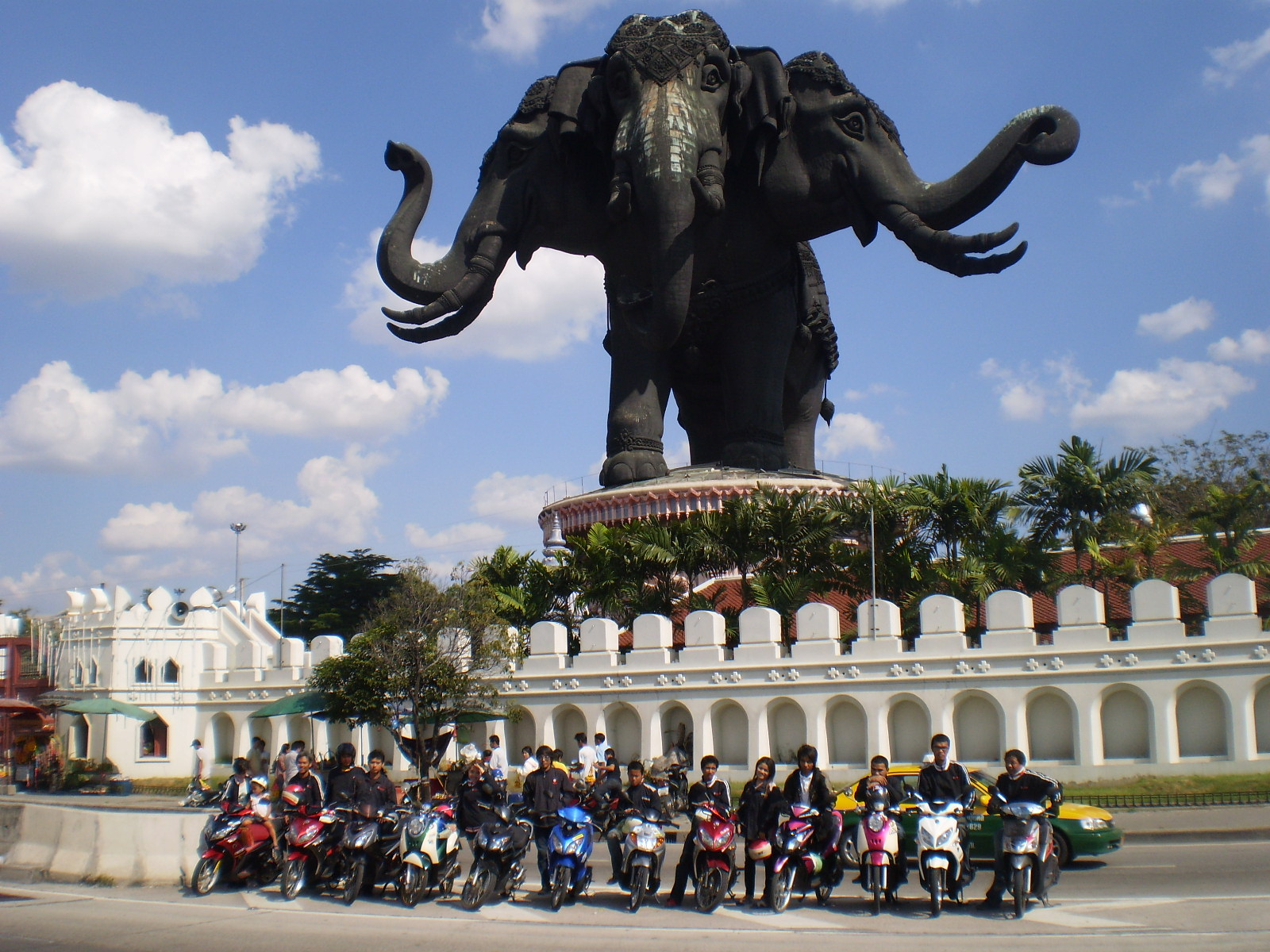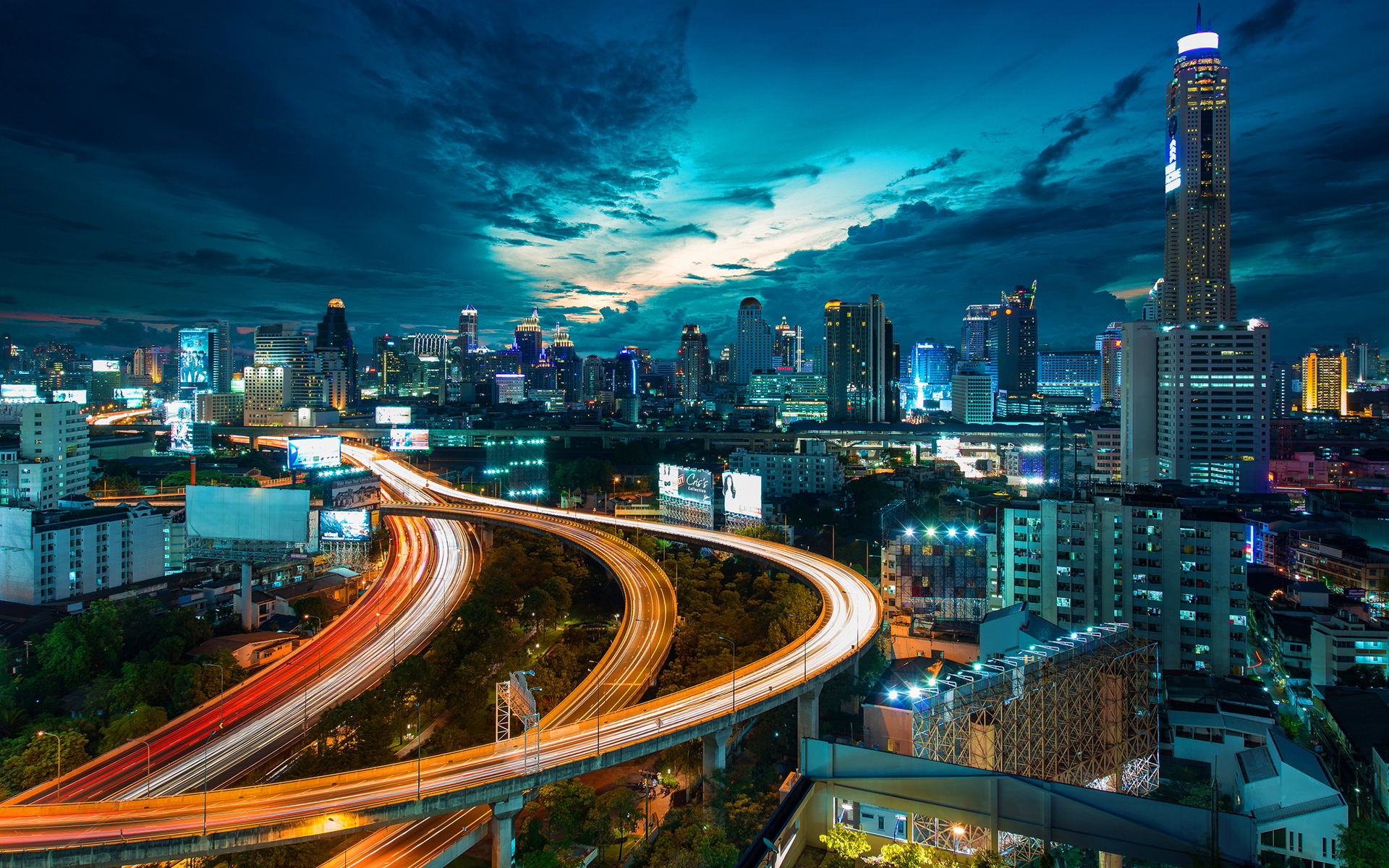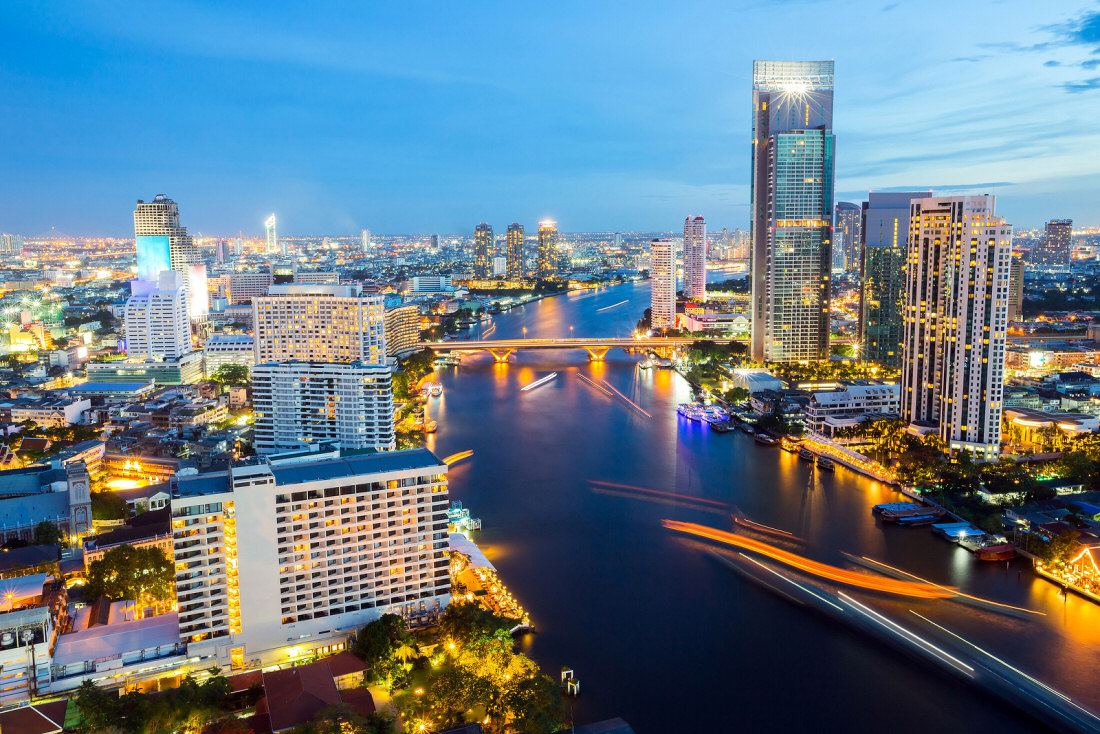Boxing clever
Muay thai kick boxing is going global, while preserving its ancient roots. Movies and live matches are making the sport a ‘must-see’ spectacle, while ever more visitors study this beautiful blend of force, dance and devotion.
The colourful boxer’s shorts arrayed at souvenir stalls show what a national icon muay thai (Thai kick boxing) has become. Many visitors who wouldn’t ordinarily see a sporting event while on holiday – and might not be boxing fans at home – seek out a muay thai match for the rich experiences it offers. Every bout combines ancient ritual with celebrity presence, brute physicality with balletic grace, fierce competition with modest respect.
Where to see muay thai
Adopting the title of their boxing gym as their surname, prospective boxers (nak muay) chance their arm at provincial arenas. As in centuries past, many get their first bouts at makeshift rings on the amateur circuit of temple fairs. Some engage in demonstration shows at tourist centres. But the most accessible and thrilling matches alternate between Bangkok’s two showpiece stadia, where all nak muay dream of competing – and one day heading the bill.
On Monday, Wednesday, Thursday and Sunday, attention falls on Ratchadamnoen Stadium, a gem of art-deco architecture in the historic district of Dusit. Downtown on Tuesday and Friday-Saturday, the arguably more famous Lumphini Stadium holds prize fights. The stadium relocated in late 2005 to a modern stadium a couple of miles away at Nang Linchee Road, off Sathorn Road, but will retain the name Lumphini.
These are the bouts seen televised in bars, restaurants and shops nationwide. Still, nothing beats watching the action live. Benches are cheaper in the stands, but a ringside pass offers the added liberty to move around, view the skills in close-up, and snap photos as the punches fly.
Each bill runs from late afternoon until nearly midnight. First the punters urge on a roster of children-in-training. Then as the crowd swells, come junior pairings, professional match-ups and, usually on weekends, contenders for championship titles. In the frenzy of the fight, some in the audience find it too hard to resist the urge to bet on the outcome. There may also be a novelty bout played for laughs, a match involving a foreigner, or a demonstration of old-style muay boran boxing.
Modern muay thai
Modern muay thai has, since the 1920s, adopted standards and equipment from Western boxing. These include shorts, gloves, canvas rings, weight divisions, red and blue corners, and a code of fair play adapted from the Queensberry Rules.
Thais are just as adept at international boxing, having won gold medals at the past three Olympics. But muay thai differs in many fundamental ways that reflect the local culture.
Sacred boxing amulets
Many taboos dictate the ceremonial side of muay thai. Each boxer enters the arena crowned with the mongkhon, a sacred loop with ends projecting rearward. Throughout the fight, he also wears prajiad armlets on each bicep. These originated as cabalistic cloth diagrams. Many still are. Secreted inside the prajiad might also be protective Buddhist tablets. Some boxers brandish another kind of amulet: the magical tattoo.
Ritual in the ring
The boxer, draped in day-glow coloured cape, first prays at his corner and the stairs to the ring, making sure to avoid the first step as he ascends. On the outer ledge, he may utter incantations to the local spirits before clambering over the ropes. Yellow garlands hung around his neck, the nak muay will pray to each corner, touching the ropes as he circles in order to seal out evil spirits.
Both boxers adopt low-sprung poses in the centre of the ring and offer a wai (prayer-like salutation) to all four sides. Each then engages in the fluid devotional movements of the wai khru rum muay. This sacred dance to honour their teachers also has practical origins. It enables the fighters to warm up, assess the opponent, and in former times — when bouts were conducted outdoors — to inspect the ground and weather conditions.
Anatomy of a boxing bout
With garlands and mongkhon removed, the pugilists fight in ways adapted from historical hand-to-hand combat. Muay thai allows many more ‘weapons’ than a pair of padded fists. The boxers punch, but they also kick. And jab with their elbows. And thud with their knees. And hammer with foot-thrusts. Some of these moves involve acrobatic turns, flying jumps or curling backward leg-swings with poetic names like the ‘Star Gatherer’, ‘Crocodile Tail Thrash’ or ‘Coiled Dragon’s Tail’.
This diverse armory makes muay thai very entertaining to watch, with little holding or chasing, and much leaping, pirouetting and switching direction. Appropriately, the dance-like combat is set to music. A traditional live band plays drum, cymbals and Javanese oboe ever faster through each round.
A lethal ‘weapon’
Muay thai offers artful ways for the slender, nimble Thai frame to impart force more lethal than that expended by heftier foreign pugilists. No wonder that the favourite magical tattoo among nak muay is of Hanuman, the brave, spry white monkey warrior from the Ramayana epic. The transsexual boxer, Nong Toom – who found worldwide fame through the Thai movie ‘Beautiful Boxer’ – was no gimmick, but a high-ranked nak muay.
Some comparisons have rated muay thai the most potent martial art in the world. The discipline evolved from military training (the Thai army still favours the sport), and provides a career for many boxers.
Learning muay thai
This combination of beauty, physicality and fidelity spurs many foreigners to take up muay thai, whether for fitness or a career. Interested tourists and foreign residents can be found slugging it out with a leather bag or sparring with a heavily-padded partner in international classes at several Thai gyms. In Bangkok, these veer from basic boxing camps in Khlong Toei and Banglamphu, to official martial arts institutes and modern gyms like Fairtex. Some health clubs offer muay thai as a get-fit regimen alongside weights and aerobics.
The variety of physical techniques demands intensive training and agility to master and deploy. You must balance them all; rely on just one or two techniques and you’ll soon taste the canvas. It also requires quick tactical thinking and wily defence against attacks from the most surprising angles.
The techniques can become quite elaborate. The gra-dode sork involves launching both feet off the ground to chop an elbow upon the top of the opponent’s head. The khao loy requires a running jump up to chest height so the lead knee can clobber an unwitting chin. The yiep dhi looks like a pose from khon court dance, with one fighter stepping onto the bent leg of his rival and swinging the other leg to wallop an undefended ear.
Whatever their nationality or faith, nak muay must abide by World Muay Thai Council regulations and perform the wai khru rum muay while wearing the mongkhon and prajiad. An equivalent is the coloured dan belts of karate.
Muay boran: ancient boxing
Devotees of things authentic may prefer studying muay chaiya. This ancient Southern Thai style is taught at Baan Chang traditional arts school in Bangkok’s Sukhumvit district.
Muay Chaiya is one of several old regional forms currently enjoying a mini-revival under the collective label muay boran (ancient boxing). Now often seen at festivals, the combatants wear loincloths, have wrists bound with abrasive rope and show more artistry in footwork than pro pugilists can usually muster. They also conduct the wai khru rum muay with more elaborate detail, elan and meditative concentration.
Muay thai proves how a traditional art can modernise and become commercialised yet still preserve its heritage. The sport has become perhaps Thailand’s most internationally recognised export after Thai food. The sport’s emerging ambassador is movie star Tony Jaa, who is touted as the Bruce Lee of muay thai through films like ‘Ong Bak’ and ‘Tom Yum Goong’.
There’s no finer compliment to a country than its cultural traits being adopted by the world. Just as many tourists acquire Thai cooking or massage skills as a lasting souvenir, increasing numbers take home muay thai techniques. More than a way to hone your body, focus your mind and impress your friends, you can shock any potential assailant with your Crocodile Tail Thrash.

